
1.
2.
3.
4.
The kinetic energy and potential energy of a particle executing simple harmonic motion will be equal, when displacement (amplitude=a) is
1.
2.
3.
4.
When a particle oscillates simple harmonic, its potential energy varies periodically. If the frequency of oscillation of the particle is n, the frequency of potential energy variation is
1. n/2
2. n
3. 2n
4. 4n
The time period of simple pendulum is T. If the length is increased by 2%, the new time period becomes
1. 0.98 T
2. 1.02 T
3. 0.99 T
4. 1.01 T
A simple pendulum is oscillating in a life. If the lift starts moving upwards with a uniform acceleration, the period will
1. Remain unaffected
2. Be shorter
3. Be longer
4. May be shorter or longer, depending on the magnitude of acceleration
The length of a second's pendulum on the surface of the moon, where g is 1/6th of the g on the surface of the earth.
1. 1/36 m
2. 1/6 m
3. 6 m
4. 1 m
The total mechanical energy of a spring-mass system is simple harmonic motion is . Suppose the oscillating particle is replaced by another particle of double mass while the amplitude A remains the same. The new mechanical energy will
1. Become 2E
2. Become E/2
3. Become
4. Remain E
The average energy in one time period in simple harmonic motion is
1.
2.
3.
4. Zero
When a body is suspended from two light spring separately, the periods of vertical oscillations are T1 and T2. When the same body is suspended from the two-spring connected in series, the period will be
1.
2.
3.
4.
A massless spring having force constant k, oscillates with a frequency n when a mass m is suspended from it. The spring is cut into two equal halves and a mass 2 m is suspended from one half. The frequency of oscillation will now be:
1.
2.
3.
4.
A mass of 2.0 kg is put on a flat pan attached to a vertical spring fixed on the ground as shown in the figure, the mass of the spring and the pan is negligible. When pressed slightly and released the mass executes a simple harmonic motion. The spring constant is 200 N/m. What should be the minimum amplitude of the motion so that the mass gets detached from the pan (take )
1. 8.0 cm
2. 10.0 cm
3. Any value less than 12.0 cm
4. 4.0 cm
The ratio of the amplitude of the simple harmonic oscillations given by is
1. 1
2. 2
3. 1/
4.
The minimum phase difference between the two simple harmonic oscillations and is
1.
2.
3.
4.
The displacement of a particle is given by . The motion of the particle is
(1) Simple harmonic
(2) On a straight line
(3) On a circle
(4) With constant acceleration
Two particles A and B execute simple harmonic motions of period T and 5T/4. They start from the mean position. The phase difference between them when the particle A complete an oscillation will be
1. /2
2. 0
3. 2/5
4. /4
Two simple pendulums whose lengths are 100 cm and 121 cm are suspended side by side. Their bobs are pulled together and then released after how many minimum oscillations of the linger pendulum, will the two be in phase again
(1) 11
(2) 10
(3) 21
(4) 20
A disc of radius R and mass M is pivoted at the rim and is set for small oscillations. If the simple pendulum has to have the same period as that of the disc, the length of the simple pendulum should be
1.
2.
3.
4.
A particle moves in the X-Y plane according to the equation . The motion of the particle is
(i) ON a straight line
(ii) On an ellipse
(iii) periodic
(iv) Simple harmonic
(1) (i), (ii)
(2) (i), (iii)
(3) (i), (iii), (iv)
(4) (iii), (iv)
A particle of mass m is released from rest and follows a parabolic path as shown. Assuming that the displacement of the mass from the origin is small, which graph correctly depicts the position of the particle as a function of time
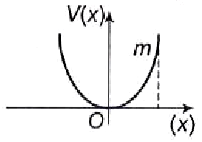
1. 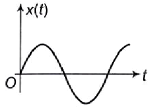
2. 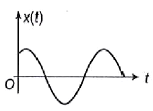
3. 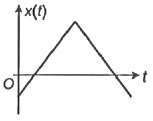
4. 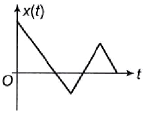
Suppose a tunnel is dug along a diameter of the earth. A particle is dropped from a point, a distance h directly above the tunnel. The motion of the particle as seen from the earth is
(i) simple harmonic (ii) parabolic
(iii) on a straight line (iv) periodic
(1) (i), (ii)
(2) (i), (iii)
(3) (ii), (iii)
(4) (iii), (iv)